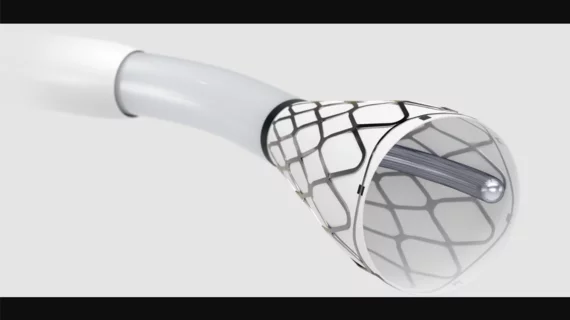Dual-action thrombectomy device could give cardiologists a new tool for treating acute PE
A new-look device for treating acute pulmonary embolism (PE) appears to be safe and effective, according to new data presented during SCAI 2024 Scientific Sessions, the annual meeting of the Society for Cardiovascular Angiography and Interventions (SCAI). The findings were simultaneously published in JSCAI.[1]
The ENGULF clinical trial examined the use of the Hēlo PE Thrombectomy System, a new dual-action thrombectomy device developed by U.S. medical device company Endovascular Engineering. The Hēlo system is believed to be the first device of its kind, using both aspiration and mechanical clot disruption to engage and remove blood clots under a physician’s control.
The first-in-human ENGULF trial included a total of 25 patients with a mean preprocedural right ventricle/left ventricle (RV/LV) ratio of 1.53. All 25 procedure were a success. After 48 hours, the mean RV/LV ratio was 1.15, good for a mean reduction of approximately 23%, and no adverse events were reported. After a follow-up period of 30 days, meanwhile, no patients had died.
“Although more rigorous studies are needed, RV/LV ratio is the most important predictor of dysfunction and adverse outcomes in acute PE, and it is exciting to see that the RV/LV ratio reduction was just as much as other FDA-approved devices on the market without any large safety concerns in a new first-in-human device,” lead author Tai Kobayashi, MD, assistant professor of clinical medicine at Penn Medicine, said in a statement.
“For the field of interventional PE therapies to fully reach its promise, continued innovation is needed to optimize our procedural workflows across the wide array of patients affected by this disease,” added senior author Jay Giri MD, director of the cardiovascular catheterization laboratories at the Hospital of the University of Pennsylvania. “The ENGULF trial is an important step in this process, demonstrating that a novel, purpose-built PE thrombectomy catheter can achieve excellent results even among its earliest users.”
Endovascular Engineering celebrated the positive trial results in a statement of its own.
“The ENGULF trial's positive results are indicative of our clinical leadership and our unwavering commitment to innovation and patient care,” Mike Rosenthal, CEO of Endovascular Engineering, said. “As a purpose-built platform for the treatment of PE, the Hēlo System is now supported by more clinical evidence than any other emerging company. We are proud to lead PE treatment innovation with meaningful advancements to transform endovascular care.”
The Hēlo device has not yet been approved for commercial use by the FDA. Click here for additional details.
Prior Cardiovascular Business coverage of SCAI 2024 Scientific Sessions is available here, here, here and here.

